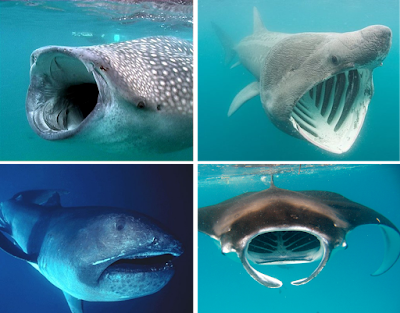 |
Bidoupia phongii Aver., Ormerod et Duy.
|
Species of subtribe Goodyerinae (Orchidaceae, Orchidoideae) in the flora of Vietnam have been the subject of a series of taxonomic treatments (Seidenfaden 1992, Averyanov 1994, 2008, Averyanov & Averyanova 2003, Nguyen, Averyanov & Duong 2005). Nonetheless, the inventory of this group remains incomplete due to their sporadic distribution, rarity in nature, and deficiency of available herbarium and living collections. Additionally, almost all Goodyera-related species rarely flower either in nature or cultivation, which makes available observations scarce. As a result, new data on species and records for the flora of Vietnam are appearing continuously (Ponert et al. 2014, Averyanov et al. 2016) in addition to the already completed accounts. One more curious novelty from Goodyerinae discovered recently in southern Vietnam is described and illustrated below.
The unusual plant described here was discovered in 2010 during botanical investigations conducted by international team of botanists under leadership of Nong Van Duy, Vice Director of the Tay Nguyen Institute for Scientific Research, Vietnam Academy of Science and Technology in the northeastern part of Tay Nguyen Plateau (Central Highlands) of southern Vietnam. Phytogeographically, the largest part of this area coincides with the South Annamese floristic province of the Indochinese floristic region that is particularly rich in plant diversity and endemism (Averyanov et al. 2003). The new species is probably a local endemic of the Bidoup Range, the chain of high mountains along the border between Lam Dong and Khanh Hoa provinces in southern Vietnam. In this region, the species occurs with such typical local endemics as Arachnis annamensis (Rolfe 1905: 391) Smith (1912: 73), Vanda christensonia (Haager 1993: 39) L.M.Gardiner (2012: 49), Bulbophyllum clipeibulbum Vermeulen (2001: 51), Paphiopedilum delenatii Guillaumin (1924: 554) and Schoenorchis hangianae Averyanov & Duy (2015: 117). This species is rare and known thus far from just a single collection. It is noteworthy that the locality for this plant in primary forest is presently being seriously disturbed by road construction, logging and anthropogenic transformation. For these reasons, it is tentatively assessed as a highly endangered species due to loss of its habitat. It should be especially emphasized that this unique taxon could become extinct in the near future, and its conservation and protection needs further field investigation.
Keywords: Orchidaceae, Goodyerinae, Vietnam, Bidoup Nui Ba national park, plant taxonomy, plant diversity, nature protection, Monocots, Southern Vietnam
......
Bidoupia Aver., Ormerod & Duy, gen. nov.
Type:— Bidoupia phongii Aver., Ormerod
et Duy.
Monotypic genus endemic to southern Vietnam.
Etymology:—The name to the Bidoup Mountains where the species was discovered.
Generic diagnosis:— New genus allied to Dossinia, Ludisia, Macodes and Papuaea alliance, from which differs in a combination of morphological features such as black leaves (purple-brown below), flowers non-resupinate due to the ovary twisting 360°, subglobular hypochile closed by subquadrate connivent and firmly adpressed side lobes, long tube-shaped arcuate claw warty on flanges, bilobulate epichile with large wing-like lobules, lip with longitudinal internal keel rising abaxially, column with 2 large, down-directed keels as well as entire stigma, and long linear forward directed arcuate rostellum and anther cap beak. Bidoupia phongii Aver., Ormerod & Duy, sp. nov. (Fig. 1, 2) Herbaceous perennials with black leaves with white median stripe, purple-brown below. Scape shortly hairy, spike with lax spirally arranged, sessile, widely opening flowers with ovary twisting on 360°. Ovary sparsely hairy, strongly twisted. Sepals free, sparsely hairy outside; median sepal erect, lateral sepals horizontally spreading, twisted at the base. Petals oblique, connivent with dorsal sepal. Lip glabrous, trilobed, spurred; hypochile small subquadrate, closed by small quadrate side lobes connivent and firmly adpressed to each other; mesochile long, terete, strongly recurved; epichile with two large, wing-shaped, denticulate lobules; spur hemispheric, with 2 massive, stalked, clavate glands; lip inside with low longitudinal keel rising abaxially into prominent flat dent. Column short, at base with 2 large, down directed keels; stigma at front of column, entire, slightly convex; rostellum long, linear, forward directed and arcuate; anther cap with long, linear, arcuate beak. Alone species in the genus.
Type:—VIETNAM. Lam Dong Province: Lac Duong district, Bidoup Ridge, primary humid, broad-leaved forest at 1526-1530 m, 12 December 2010, Nong Van Duy, VTN 1465/AL 91 (holotype: Herbarium of Tay Nguyen Institute of Scientific Research of Vietnamese Academy of Science and Technology!; isotype: LE!; cultivated and flowered in the botanical garden of Tay Nguyen Institute of Scientific Research of Vietnamese Academy of Science and Technology. Type specimen prepared from a cultivated plant, 27 August 2015). (Fig. 1, 2).
Etymology:— Named in honor of Nong The Duy Phong, son of the discoverer, Nong Van Duy.
Habitat, phenology and conservation status:— Creeping terrestrial herbs in primary, humid, broad-leaved and mixed evergreen forests (with Pinus dalatensis and P. krempfii) on granite. 1500–1550 m. Flowering August– September. Rare. Estimated IUCN Red List status: EN/DD.
Distribution:— Endemic thus far to the type locality.
Leonid V. Averyanov, Paul A. Ormerod, Nong Van Duy, Tran Van Tien, Tao Chen and Dian-Xiang Zhang. 2016.
Bidoupia phongii, New Orchid Genus and Species (Orchidaceae, Orchidoideae, Goodyerinae) from southern Vietnam.
Phytotaxa. 266(4); DOI:
10.11646/phytotaxa.266.4.6








































